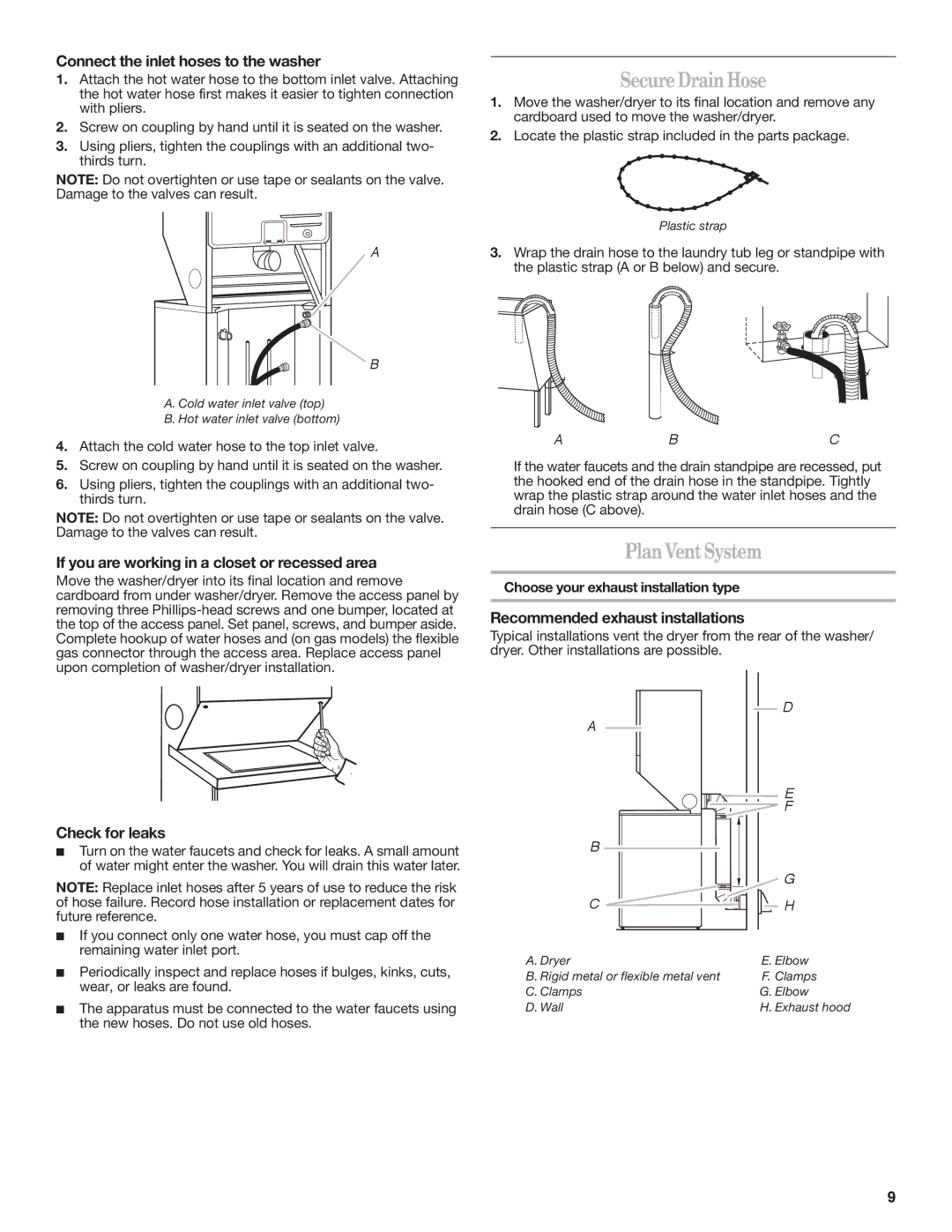
Connect the inlet hoses to the washer
1.Attach the hot water hose to the bottom inlet valve. Attaching the hot water hose first makes it easier to tighten connection with pliers.
2.Screw on coupling by hand until it is seated on the washer.
3.Using pliers, tighten the couplings with an additional two- thirds turn.
NOTE: Do not overtighten or use tape or sealants on the valve. Damage to the valves can result.
A
B
A. Cold water inlet valve (top)
B. Hot water inlet valve (bottom)
4.Attach the cold water hose to the top inlet valve.
5.Screw on coupling by hand until it is seated on the washer.
6.Using pliers, tighten the couplings with an additional two- thirds turn.
NOTE: Do not overtighten or use tape or sealants on the valve. Damage to the valves can result.
If you are working in a closet or recessed area
Move the washer/dryer into its final location and remove cardboard from under washer/dryer. Remove the access panel by removing three
Check for leaks
Turn on the water faucets and check for leaks. A small amount of water might enter the washer. You will drain this water later.
NOTE: Replace inlet hoses after 5 years of use to reduce the risk of hose failure. Record hose installation or replacement dates for future reference.
If you connect only one water hose, you must cap off the remaining water inlet port.
Periodically inspect and replace hoses if bulges, kinks, cuts, wear, or leaks are found.
The apparatus must be connected to the water faucets using the new hoses. Do not use old hoses.
SecureDrainHose
1.Move the washer/dryer to its final location and remove any cardboard used to move the washer/dryer.
2.Locate the plastic strap included in the parts package.
Plastic strap
3.Wrap the drain hose to the laundry tub leg or standpipe with the plastic strap (A or B below) and secure.
ABC
If the water faucets and the drain standpipe are recessed, put the hooked end of the drain hose in the standpipe. Tightly wrap the plastic strap around the water inlet hoses and the drain hose (C above).
PlanVentSystem
Choose your exhaust installation type
Recommended exhaust installations
Typical installations vent the dryer from the rear of the washer/ dryer. Other installations are possible.
A | D |
| |
| E |
| F |
B |
|
| G |
C | H |
A. Dryer | E. Elbow |
B. Rigid metal or flexible metal vent | F. Clamps |
C. Clamps | G. Elbow |
D. Wall | H. Exhaust hood |
9
